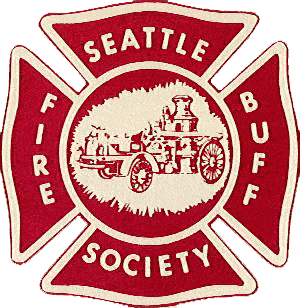After a devastating fire burned down the original smoke house, we re-engineered the design to prevent future issues from ‘over-firing’ the smoke house!
Life is about learning for your mistakes!
SMOKE HOUSE VIDEO SERIES
Part 1 (the original build): https://youtu.be/PhzOuBxXEOc
Part 2 (overnight – smokehouse burn down): https://youtu.be/ll6V2-EUDQc
Part 3 (re-build): https://youtu.be/8N2TiO0f8Kg
At first I thought I could use some duct work, but I discovered that this was galvanized and would give off zinc fumes if the temperatures reached over 200C or ??F. I then used muriatic acid to try to remove the zinc, but this was extremely toxic. If galvanized metal get too hot, the zinc vaporizes and can attach to food particles potentially making people really sick when the eat the smoked food. Symptoms of zinc poisoning include nausea, vomiting, loss of appetite, stomach cramps, diarrhea, and headaches. During prolonged exposure the effects can include low copper levels, lower immunity, and low levels of HDL cholesterol.
Then I figured I could simply line the inside of the smoke house with cement board which will not burn. There are some styrofoam mixed into the board, but these were fired off with a torch and are not as volatile as the zinc.
A smokehouse is a small building where meat or fish is cured with smoke. Smoke works to cure and preserve the meat for long term storage without the use of refrigeration. If done correctly, smoked meats can last without spoiling for up to a year or more.
In traditional use, smokehouses served as a place to both smoke and preserve meat, but also to store it for long term use. In long term storage, salt and smoke were used in combination to effectively dry and cure the meat by removing all or most of the moisture. This prevents bacteria and molds forming which destroys the meat. Some houses also ward off animals from accessing the meats as smoke makes the environment inhospitable.
Before modern refrigeration and freezers, salting was a mainstay.
Various woods can be used for smoking, but all should be wet enough so that they burn cold and inefficiently. These woods will produce incomplete combustion – smoke. Apple wood, cherry, some spruce and alder make great smoking agents and impart nice flavor to meats.
A smoke house is a simple small box, or house with a vent at the top, not air tight. Wood is placed in a lower box and piped in to the space to encircle the meats. Wood is burned slowly, but persistently over time. Meats can be smoked for hours or days depending on personal reference and types of meats, cultures and desired use.
Over time, the smoke house will blacken, further protecting the smoke house from pests.
“Self-Reliance” is an 1841 essay written by American transcendentalist philosopher and essayist Ralph Waldo Emerson. It contains the most thorough statement of one of Emerson’s recurrent themes: the need for each individual to avoid conformity and false consistency, and follow his own instincts and ideas. This channel will approach self reliance from a modern perspective. and will focus on various build projects using modern amenities, and tools to build a completely self reliant lifestyle.
Best woods for smoking include:
1. Oak. Good wood for new smokers. Medium strong flavor. Good for lamb, beef, brisket, and sausages.
2. Hickory. Most versatile. Too much smoke will be bitter. The smoke though is sweet, savory and hearty. Good for ribs, pork shoulders, red meat and poultry.
3. Maple. Subtle smoke. Sweet, light mild. Good for poultry, pork, foul.
4. Mesquite. Hardy with intense flavor, use modestly. Good for red meat.
5. Pecan. Rich, sweet, nutty flavor. Good for briskets, roasts, and ribs
6. Apple. Mild, sweet, mellow. Good for chicken, wild foul, pork.
7. Alder. Light, sweet, delicate. Good for fish, like salmon, trout.
8. Cherry. Mild, fruity. Good for chicken, turkey, ham.
SOCIAL MEDIA
Intagram: https://www.instagram.com/wood_chucker_987/
Facebook: https://www.facebook.com/modernselfreliancechannel
SPONSORS
– Inergy Apex Solar Power (Discount Code: BEARDSMAN): https://glnk.io/q0w/the-wooded-beardsman
– Norwood Portable Sawmill: https://www.norwoodsawmills.com
– Eastonmade Wood Splitter: http://www.eastonmadewoodsplitters.com/
– Briggs and Stratton: https://www.briggsandstratton.com
– Vicwest (Roof): https://vicwest.com/
– inergy (Solar): https://glnk.io/q0w/the-wooded-beardsman
– Flooring: https://bigelowflooring.ca/
“Self-Reliance” is an 1841 essay written by American transcendentalist philosopher and essayist Ralph Waldo Emerson. It contains the most thorough statement of one of Emerson’s recurrent themes: the need for each individual to avoid conformity and false consistency, and follow his own instincts and ideas. This channel will approach self reliance from a modern perspective. and will focus on various build projects using modern amenities, and tools to build a completely self reliant lifestyle.
